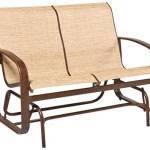Where to Take Broken Furniture
Dealing with broken furniture can be a frustrating experience. Whether it's a chipped table leg, a torn sofa cushion, or a completely shattered chair, it's important to know where to take it for repair or disposal. This guide outlines several options for disposing of or repairing broken furniture, considering factors like the severity of the damage, the type of furniture, and your personal preferences.
Furniture Repair Services
For furniture that can be repaired, seeking professional assistance is often the best course of action. Furniture repair services specialize in restoring damaged pieces to their former glory. These services can handle a wide range of repairs, including:
- Repairs to upholstery: Replacing worn-out fabric, fixing rips and tears, and addressing sagging cushions.
- Wood repairs: Fixing scratches, dents, and cracks in wooden furniture.
- Structural repairs: Reinforcing weakened joints and fixing broken legs.
- Finishing: Repainting, refinishing, or restoring the original finish of furniture.
To find a reputable furniture repair service, consider the following:
- Local recommendations: Ask friends, family, or neighbors for recommendations for furniture repair services they have used in the past.
- Online reviews: Search for furniture repair services in your area and check reviews on platforms like Google, Yelp, or Angie's List.
- Professional organizations: Check with professional organizations like the National Association of Furniture Refinishers (NAFR) or the American Society of Furniture Designers (ASFD) for listings of certified furniture repair professionals.
Donation Centers and Charity Organizations
If your broken furniture is beyond repair, but still has some value, consider donating it to a local charity or donation center. Many organizations accept furniture donations to support their missions, such as providing housing or furniture to people in need. When donating furniture, ensure it meets the following criteria:
- Safe and functional: Ensure the furniture is structurally sound and free from any hazards like sharp edges or loose screws.
- Clean and presentable: Clean the furniture thoroughly and remove any stains or odors.
- Acceptable condition: Some organizations have specific guidelines for the condition of furniture they accept, so check their requirements before donating.
To find donation centers or charities near you, consider these resources:
- Local government websites: Websites of your local municipality may list donation centers or charities in your area.
- Online directories: Websites like Charity Navigator or GuideStar provide comprehensive listings of charities and their contact information.
- Social media: Search for local donation centers or charities on social media platforms like Facebook or Twitter.
Recycling Centers and Waste Management Facilities
If your broken furniture cannot be repaired or donated, it may be necessary to dispose of it. Fortunately, many recycling centers and waste management facilities accept furniture for recycling or disposal. When taking furniture to these facilities, it is important to do the following:
- Check for specific guidelines: Contact the facility directly to determine the types of furniture they accept and any special instructions for disposal, such as disassembly requirements.
- Properly dispose of hazardous materials: If your furniture contains hazardous materials like foam padding or certain types of paint, dispose of them separately according to local regulations.
- Consider recycling options: Ask about recycling options for specific materials, such as metal legs or wooden frames, if applicable.
It is essential to follow local regulations and guidelines for disposing of furniture responsibly. Ensure to check with your local municipality or waste management company for information on acceptable disposal methods, fees, and scheduling.
Upcycling and Repurposing
For creative individuals, broken furniture can be an opportunity for upcycling and repurposing. Upcycling involves transforming old furniture into something new and functional. Consider the following ideas:
- Reusing furniture parts: Salvaging wooden legs or drawer fronts to create unique shelves or coffee tables.
- Transforming furniture into storage: Turning an old dresser into a bookshelf or repurposing a broken chair as a planter.
- Recovering and reupholstering: Updating furniture with new fabric and padding to give it a fresh look.
Repurposing involves giving furniture a new purpose. This may involve altering the furniture's design or using it for a completely different function. Consider the following:
- Transforming an old table into a desk or craft table.
- Using a broken chair frame as a base for an outdoor planter.
- Repurposing a broken sofa into a comfortable reading nook.
Upcycling and repurposing not only provide a creative outlet but also promote sustainability by reducing waste and finding new uses for old items.

How To Dispose Of Broken Furniture Ultimate Guide Ez Cleanup

How To Get Rid Of Old Broken Furniture

How To Get Rid Of Old Broken Furniture In 4 Easy Steps

Top How To Get Rid Of Old Broken Furniture In 2024 Q

7 Ways To Get Rid Of Furniture Budget Dumpster

Furniture Stores That Take Away Old Loadup

Furniture Disposal Jacksonville Nc Junk Busters Video

Furniture Stores That Take Away Old Loadup

Take Apart Sofa Furniture Updated April 2025 97 Photos Manhattan New York Repair Phone Number Yelp

New Take On Kintsugi Heals Broken Furniture With Acrylic








